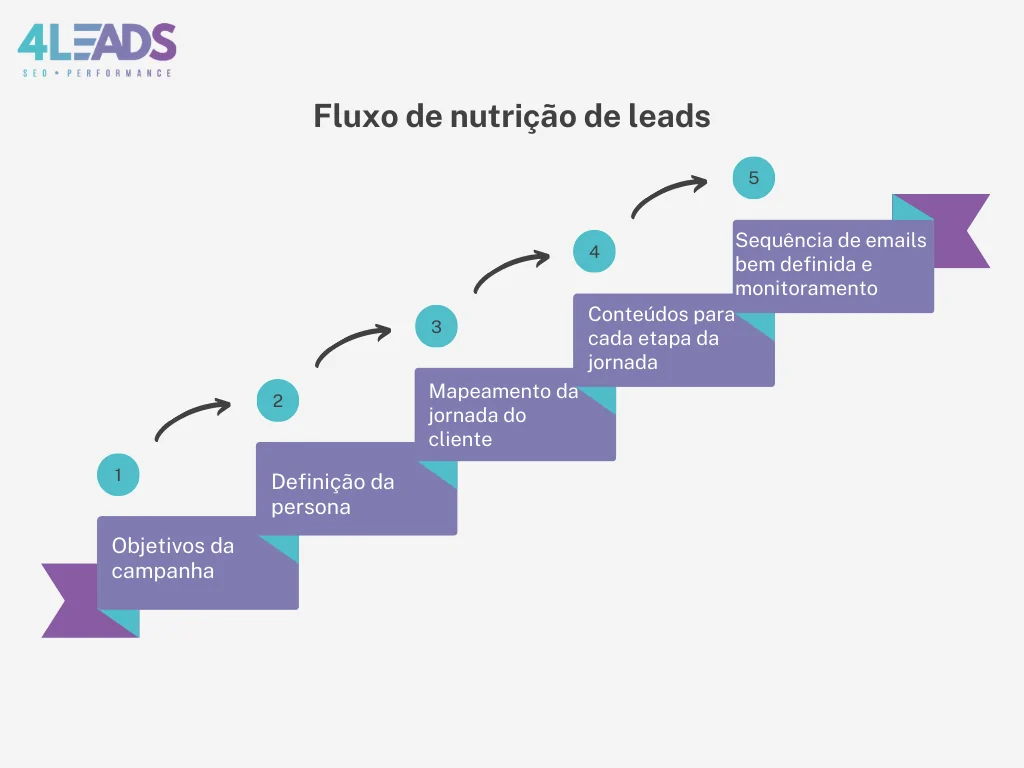
On numerous occasions, business managers and marketing managers may have struggled to increase the visibility of their business and close sales digitally. That's because someone once said that it's enough to just make a website and voila, sales would skyrocket!
However, it's not quite that simple. One effective way to increase sales opportunities is through lead generation, a vital action in a digital marketing strategy. This means that you offer something to the user, like valuable content, in exchange for their personal information (name, email, profession).
In doing so, besides having more chances of conversions and sales, you obtain important data about these potential customers.
However, the work doesn't stop there. In addition to generating leads, it's crucial to nurture them! Lead nurturing is done through email marketing and is used to build a relationship with these individuals who agreed to fill out a form and provide their data.
In this content we prepared, you will find out:
Lead nurturing is a Content Marketing strategy aimed at maintaining a close relationship with the audience by sending relevant content to educate them and prepare them for a purchase.
Email marketing, the content sent to users, respects the consumer's buying journey, meaning if a person subscribed to your site's newsletter, they will receive a welcome email, for example.
Now, if the person downloaded a piece of valuable content (ebook, infographic, spreadsheet), they might receive a sequence of 3 to 4 emails encouraging them to take an action, which could be talking with a specialist to better understand your product or service, or even making a purchase.
So, as you can see, lead nurturing is essential to keep potential customers informed about news, offers, blog content, and more. In this way, it's possible to increase sales opportunities and always maintain a close relationship with the audience.
Better understand the process of lead nurturing in a didactic way.

The two terms may sound alike, but they embody different concepts.
Lead Generation is the process of attracting and piquing the interest of potential customers in your product or service.
The goal is to capture contact information of these potential customers, such as name, email, and phone number (through valuable content or registration), to start a relationship and, subsequently, convert them into buyers.
On the other hand, Lead Nurturing is the process of building and maintaining a relationship with the generated leads. This is done through relevant and personalized communications, with the aim of educating and informing the potential customer about the company's value, its products, and services.
This strategy helps prepare these prospects for the purchasing moment and facilitates the conversion into sales.
The benefits of using Lead Nurturing are noticeable: research proves that the strategy can increase a company's sales volume by 50% from online contacts. This is at a 33% lower cost than that of acquiring new contacts, according to data from Forrester Research. In other words, besides increasing opportunities and conversions, it ends up reducing the Customer Acquisition Cost (CAC).
Now that you understand what lead nurturing is and its importance for the marketing strategy, learn what the advantages are for your sales team.
Lead nurturing allows the sales team to establish solid and lasting relationships with potential customers. This is because the materials sent by the marketing team, via email, cater to these individuals' needs.


In this way, the lead that reaches the sales team is already more qualified. Thus, the sales team can more easily converse and build a relationship with these individuals.
According to the Annuitas Group, nurtured leads generate 47% more sales compared to those that were not nurtured.
By maintaining a close and consistent relationship with the leads, the sales team can identify the right moment to present an offer, ensuring that the lead is ready to make a purchasing decision.
Additionally, nurturing allows the sales team to better understand the needs and preferences of each lead, allowing them to offer personalized solutions and increase the chances of success in the sale.
Lead nurturing helps to optimize the sales process, saving both time and resources. With segmentation and personalized communication, the sales team can focus their efforts on the most promising leads, those most likely to convert into customers.
This prevents the team from wasting time and effort on less interested or unqualified leads, increasing the efficiency of the sales process and the profitability of the company.
By providing useful and educational content over time, the sales team demonstrates that it is committed to the customer's success, even after the purchase. This helps to strengthen the relationship between the company and the customer, creating a lasting bond.
Satisfied and loyal customers are more likely to make repeat purchases and to recommend the company to others, boosting the growth and reputation of the brand.

Often, a problem we identify in companies is that sales teams are frequently unprepared to handle the leads. Therefore, it's crucial that the marketing team is integrated with sales.
Here are some ways to improve lead nurturing so that sales teams achieve above-average results.
To support sales teams, it's essential to invest in training and upskilling the professionals involved. They need to understand what leads are, the language and tone of voice to be used, the needs of these potential customers, and how technologies that optimize the process work.
Furthermore, it's important to encourage the development of interpersonal skills, such as empathy and active listening, which are crucial for establishing solid relationships with leads and understanding their needs.
Lead nurturing is a continuous process that requires regular monitoring and adjustments. Sales teams should have access to the results of nurturing actions to understand what's working, what's going well, and what could be improved.
Through analysis, along with the marketing team, bottlenecks can be quickly identified and resolved. This way, the teams can adjust strategies as needed, ensuring that lead nurturing actions are always effective and aligned with the needs of potential customers.
The cooperation between the marketing and sales teams is essential for improving lead nurturing. Both departments need to work together. Marketing creates content, and sales help distribute it.
Also, the exchange of information between teams allows sales professionals to stay updated on the latest marketing campaigns and use this information to enhance lead nurturing and their sales approach.

See how collaboration between marketing and sales results in more effective, integrated actions, increasing the chances of successfully converting leads into customers?
Lead nurturing is performed by both teams. Marketing creates strategies, captures leads, creates content, manages email flows, monitors results - all this to support the sales team in closing deals.
The sales team, in turn, receives these qualified leads and, with the help of content, technology, and effective communication, manages to strengthen these relationships and achieve better results in closing sales.
And as you saw, there are various strategies, methods, and techniques that need to be performed by those who truly understand the subject. Otherwise, you won't achieve the results you desire.
For this, you need to rely on the expertise of a company like 4Leads, which has a unique and innovative methodology that helps your sales team improve its performance in nurturing leads.
We have everything you need to take off in the digital environment. Speak with our team of specialists to learn about our methodology and receive a roadmap of what you need to boost your results.